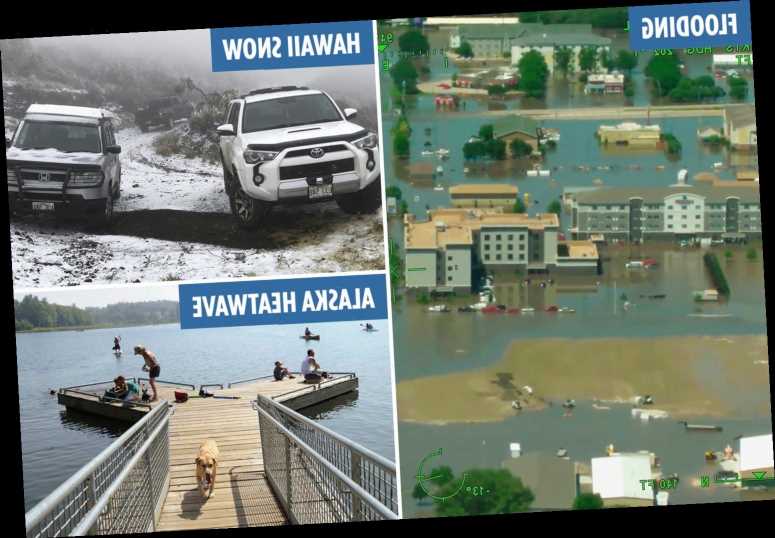MORE than 120,000 weather records broke this year across the United States – including heatwaves, warm Alaskan days and Hawaiian snow.
The stunning conditions were captured and summarized by the National Climatic Data Center.
Alaskan Heat Wave
On the 4th of July, there were a number of "all-time high-temperature records" set at official observation locations throughout Southern Alaska, according to the National Weather Service Anchorage.
Anchorage International Airport hit 90 degrees on the national US holiday, with three other locations only a degree or two behind.
Alaskan climatologist Brian Brettschneider tweeted in July: "Looking at the entirety of the Alaska climate record, it is likely that Saturday, July 6, 2019, was the warmest day on record statewide (at least in the last 100 years)."
The 49th state started the year with its warm season coming surprisingly early – with 70-degree temperatures on March 19.
Extreme heat in Alaska, as well as heatwaves in the Southern Plains and southeastern regions of the US, contributed to the warming and absence of sea ice.
Climatologist Dagmar Budikova, the lead author of a 2019 study in the AGU's Journal of Geophysical Research told Phys Org: "The latest research on this topic suggests that declining Arctic sea ice may be linked to increased incidence of extreme weather patterns across the northern hemisphere.
"Our results confirm this hypothesis by offering further evidence that Arctic sea ice variability has the potential to influence extreme summer temperatures and the frequency of heatwaves across the southern US."
Hawaiian Snow
Earlier this year, Hawaii encountered a historic winter storm that left Maui's Polipoli State Park covered in snow in February.
The snow was recorded at the lowest elevation level ever in the Aloha State.
The winter storm also brought heavy rain, strong winds, and damaging surf.
Wind gusts up to 70mph caused utility poles to fall into streets, making riving conditions unsafe in Maui.
Lifeguard Bryan Phillips told Hawaii News Now said the waves were “on another level.”
He said it was: "Super, super dangerous.
“It’s a weather event and a wave event that some people have never seen in their lifetimes.”
Yes ?we got snow too ! ❄️ #maui #polipoli #kula #snow#letsbuildasnowman⛄️
A post shared byelvirakeserovic (@elvirakeserovic) on
Midwest Flooding
A flood crisis hit the Lower Mississippi Valley this year from the spring until July – destroying homes and disrupting planting seasons for corn and soybeans.
It was the longest flood on record since the 1927 Great Flood, according to the Center for Disaster Philanthropy.
The center explained: "Given that the US experienced its wettest winter since 1895, combined with heavy snow in Canada, many rivers – including the Mississippi, Ohio and Missouri – were at high levels before “Biblical rains” hit the area … repeatedly."
Flooding in the Mississippi, Missouri, and Arkansas rivers impacted about 14 million people – and were just some of the 10 billion-dollar weather and climate change disasters seen this year.
Between March and July 2019, six states – South Dakota, Iowa, Minnesota, Wisconsin, Nebraska and Missouri – flood gauge records were set at 42 different locations.
The flooding led to four confirmed deaths.
One death was confirmed in Iowa, two deaths in Nebraska, and another in Missouri.
Source: Read Full Article




